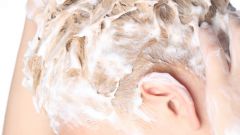Instruction
1
One should never panic, blame the sick, and accuse him that he communicates with "indecent" types – in modern conditions the head lice often occurs in outbreaks among students of very wealthy schools. Fortunately, modern drugs allow get rid of head lice quickly and without harm to their health.
2
Be sure to inspect the hair of all family members – lice easily move to a new "master" by direct contact, sharing bedding or care items (combs, towels, hats). Special attention should be paid to the detection of adult insects (they are moveable and easily visible upon inspection), but the immature larvae (nits) that look like hair attached to the small balls, visible only under careful inspection.
3
The safest, most efficient but also the most unacceptable for most patients a way of getting rid of lice to become fully shaving the head "bald" – the causative agent of the disease is deprived of their usual habitat.
4
Mechanical removal of lice and nits when combing comb possible, but this method is rarely used by itself due to the fact that for a complete cure you need a daily hair treatment for 30-40 days.
5
Often use a combination of methods of treatment of head lice, which include the treatment of the scalp special products with insecticidal activity (shampoos and sprays) with the obligatory brushing of the hair after treatment. The procedure should be conducted during the month 1 time in 10 days (that's how much time is required to complete the transformation of NIT into an adult insect), and the treatment should be repeated three times.
6
Be sure to treat bedding, tools, personal care, clothing, and in the treatment of children toys with special products to kill insects in objects and things. When unavailability of chemical insecticides treatment they can replace a treatment of things steamed under pressure – only the boiling and Ironing the iron can not always kill the nits.
Note
The danger of head lice is that in addition to the fairly unpleasant manifestations of the disease (itching, scratching, blood-crusts) lice of any kind can become carriers of the pathogen typhus and relapsing fever. In modern conditions most often detected head lice.



